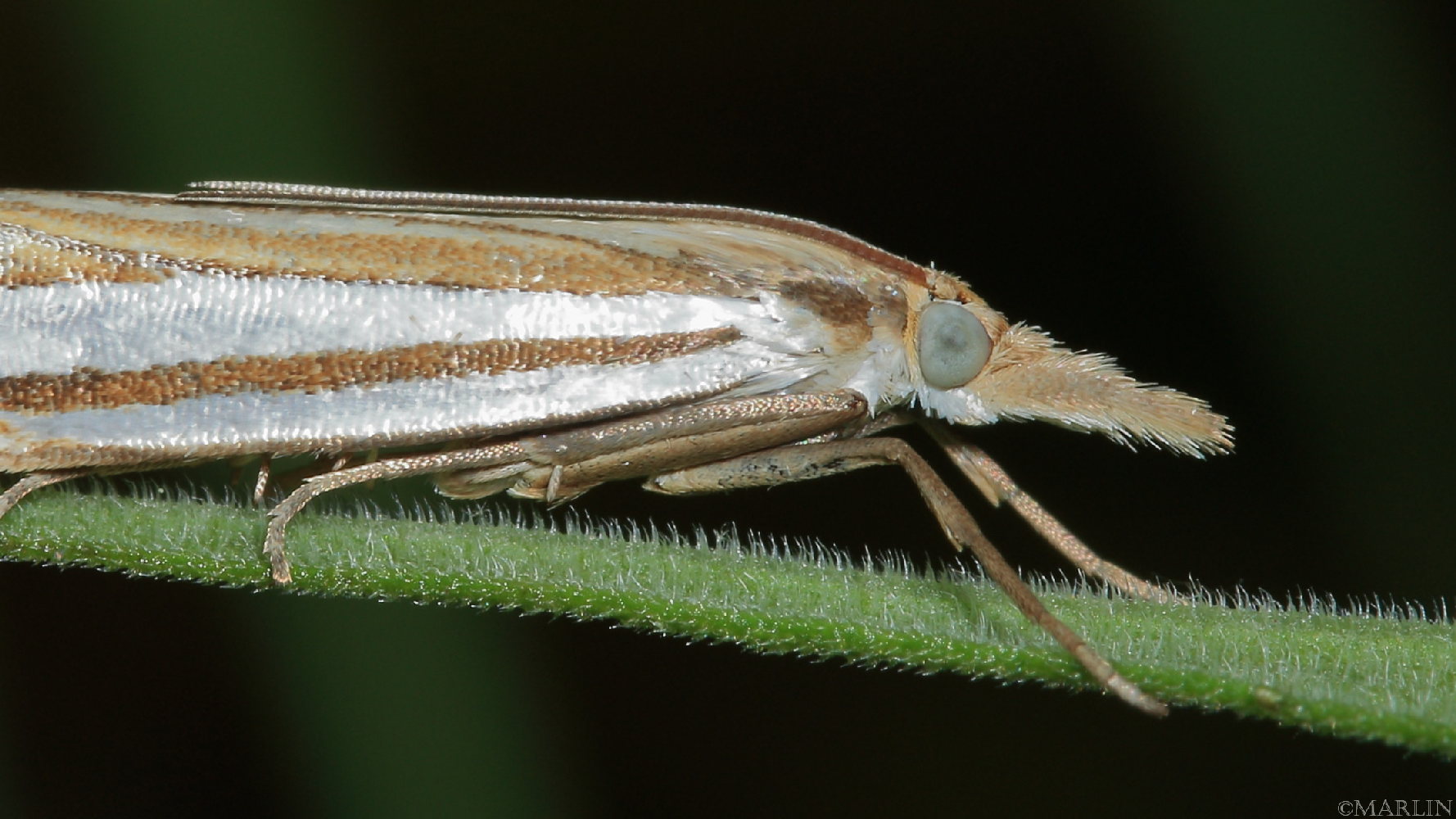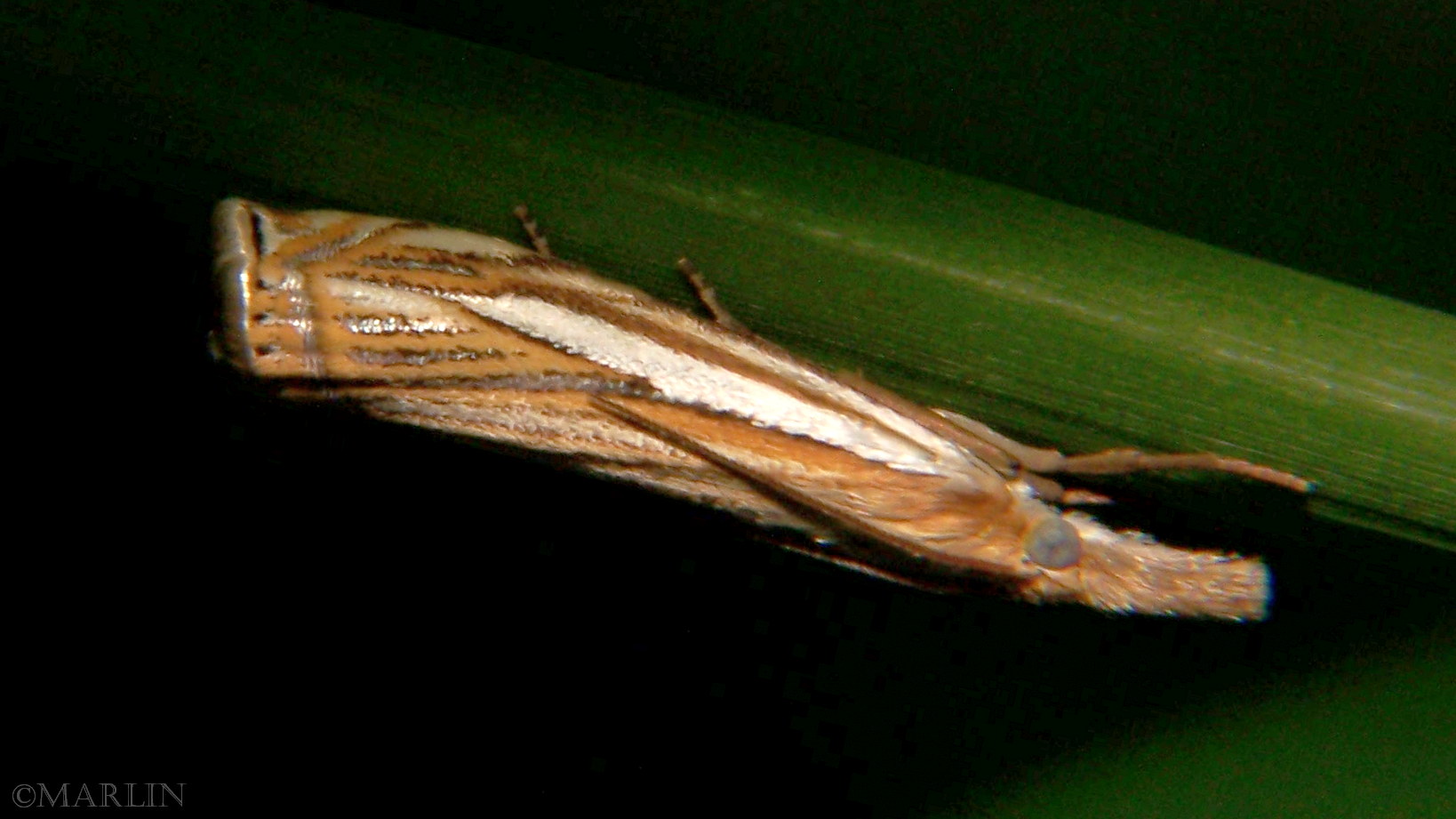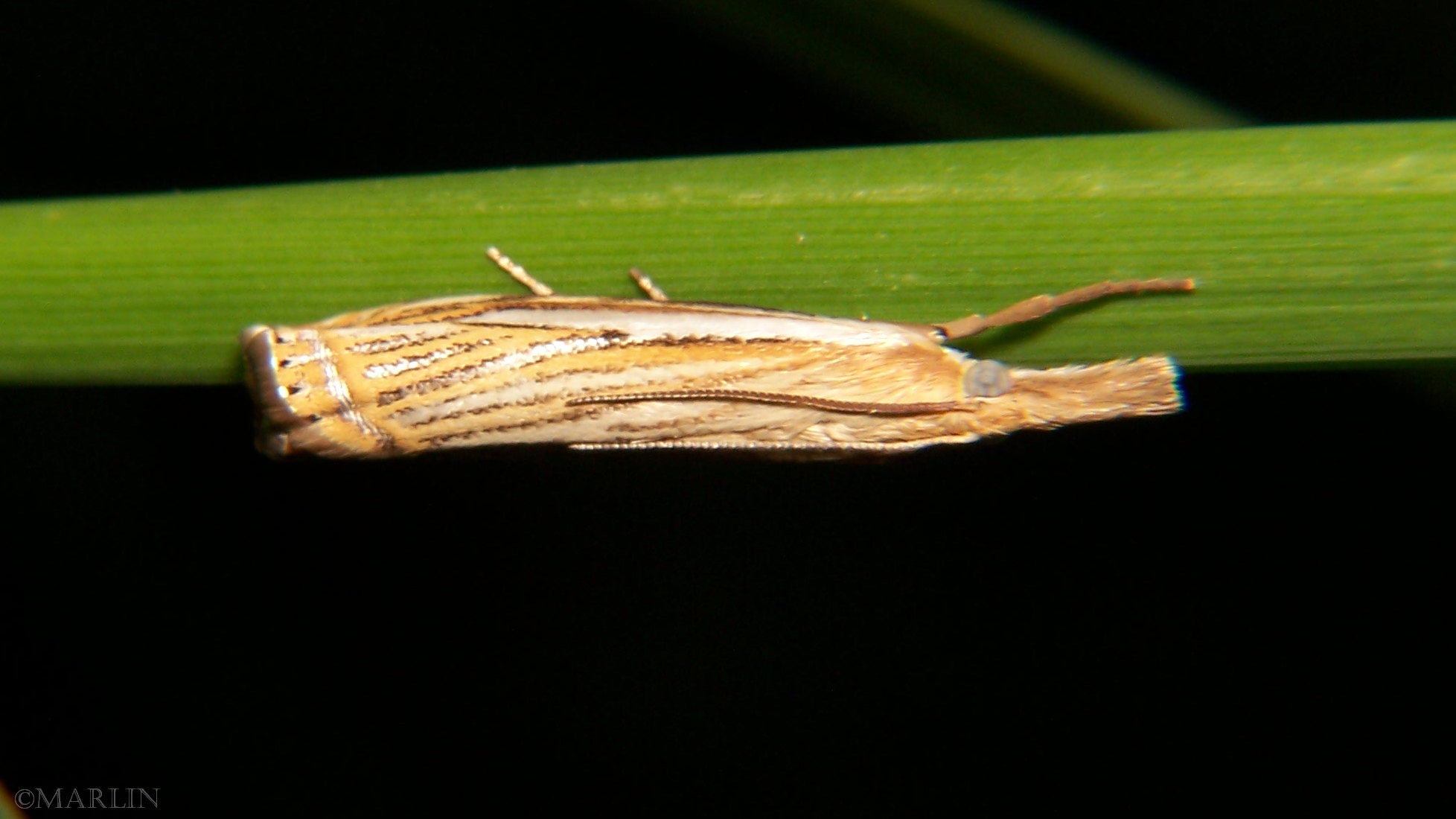Double-Banded Grass-Veneer Moth – Crambus agitatellus
Hodges#5362 Live adult crambid moths photographed at Winfield, DuPage County Illinois. Size: 10mm
The snout-like feathery projection on the head of this moth consists of two labial palps. The palps are sensory appendages used to detect chemical cues such as pheromones or scents from host plants.
Crambid moths are a diverse family of small to medium-sized moths belonging to the Crambidae family. They are found throughout the world and are particularly diverse in tropical regions. There are more than 11,000 species of crambid moths described, and new species are still being discovered.
Crambid moths have narrow wings that are often held flat over their bodies. Their wings are usually patterned with stripes or bands and can range in color from pale white or yellow to dark brown.
Formerly classified as a subfamily of Pyralidae, the crambid moths include many important agricultural pest species:
- Grape leaf-folder: Larvae are leaf-tiers and pests in Napa and Sonoma vineyards in California.
- Sod Webworm: Larvae are pests of lawns and golf courses.
- Sugar Cane Borer: Crop pest in sugar cane, sorghum, rice, and other grasses
- Southwestern corn borer: Pest in numerous crops; corn, sorghum, millet, sugar cane and other field crops.
References
- Bugguide.net, “Double-Banded Grass-Veneer“
- Wikipedia, “Sugarcane Borer” “Crambus” “Crambidae“
- Texas A&M University, College of Agriculture and Life Sciences, “Urola nivalis”
Butterflies Main | Butterflies Index




